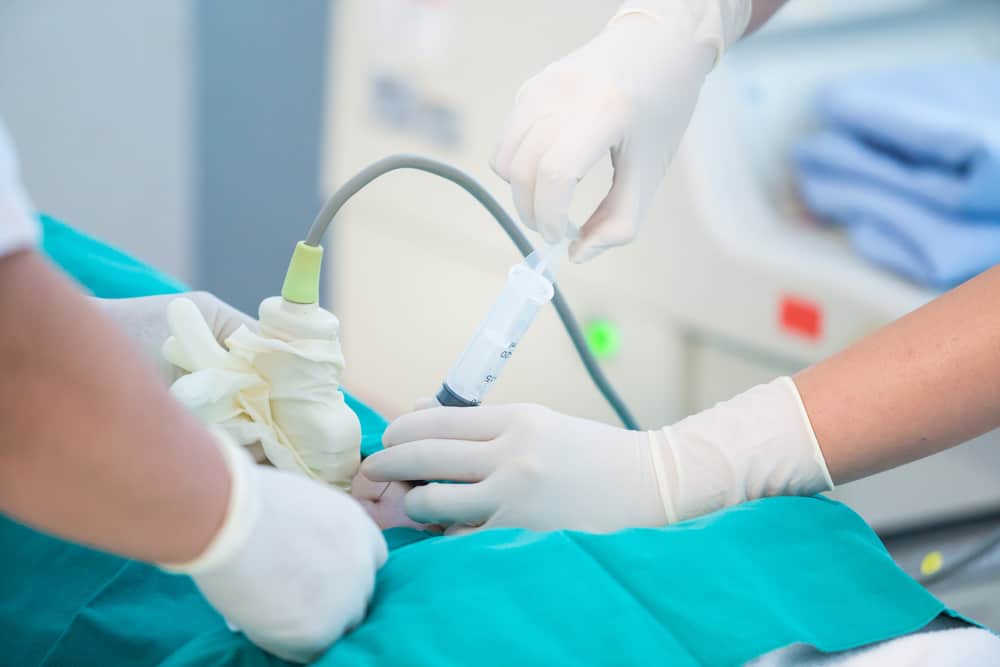Contents:
Medical Video: Ischemic Stroke
Stroke is an emergency medical condition that occurs when the blood flow to the brain is cut off. Without blood intake, brain cells will die. This can cause a series of fatal complications, from permanent paralysis to death. There are more than one type of stroke. The most common are ischemic stroke and hemorrhagic stroke.
The 2014 Health Research and Development Agency (Balitbangkes) report showed that stroke rose from fourth place to number one cause of death in Indonesia. Therefore, it is important to be able to distinguish the two so that you can get the right medical help before it's too late.
What is ischemic stroke?
Ischemic stroke is a type of stroke that occurs when a blood vessel that supplies blood to the area of the brain is blocked by a blood clot. Ischemic stroke is responsible for 87 percent of total stroke cases.
Blood clots are often caused by atherosclerosis, which is a buildup of fat deposits in the lining of the blood vessels. Some of these fat deposits can escape and block the flow of blood in your brain. The concept is similar to a heart attack, where blood clots block the flow of blood to some of your heart.
Ischemic stroke can be embolic, which means blood clots originate from other parts of your body and then move towards the brain - usually from the heart and large arteries in the upper chest and neck.
An estimated 15 percent of cases of embolic stroke are caused by a condition called atrial fibrillation, a condition that makes your heart beat irregularly. This creates a condition in which clots can form in the heart, detach, and travel to the brain.
Blood clots that cause an ischemic stroke will not disappear without treatment.
What are hemorrhagic strokes?
Hemorrhagic stroke occurs when blood vessels in the brain leak or break. Hemorrhagic stroke accounts for about 13 percent of total stroke cases.
This type of stroke starts from a weakened blood vessel, then ruptures and spills blood around it. Leaking blood builds up and blocks the surrounding brain tissue. Death or long coma will occur if bleeding continues.
There are two types of hemorrhagic strokes. The first is an aneurysm, which causes a portion of the blood vessels to weaken until it expands like a balloon and sometimes breaks. The other is arteriovenous malformation, which is the condition of abnormally formed blood vessels. If such blood vessels rupture, can cause hemorrhagic strokes.
What are the different symptoms of ischemic stroke and hemorrhagic stroke?
Different types of strokes can cause the same symptoms because each affects the blood flow in your brain. The only way to determine the type of stroke you might face is to get medical help. The doctor will run a CT-scan imaging test to read your brain.
The National Stroke Association recommends the FAST method to help you identify stroke warning signs:
- F (Face / Face): When you smile, does one side of your face drop down (smile sticking)? Is there numbness around the mouth?
- A (Arms / Arms): When you lift both arms, is one of the arms drooping limply down?
- S (Speech / Talk): Is your speech unclear - pelo / hoarse / slurred / nasal sound? Are there changes in your volume? Are you hard to talk?
- T (Time / Time): If you experience these symptoms, immediately call 119 or go to the nearest emergency room. This is needed so that you can receive treatment at the hospital stroke unit within 3 hours of arrival.
Additional symptoms that do not match the FAST description include:
- Sudden confusion, such as difficulty understanding what someone is saying
- Difficulty walking, sudden dizziness, or loss of balance
- Sudden and severe headaches with no known cause; nausea and vomiting
- Difficulty seeing in one or both eyes - blurred vision, double vision or loss of vision
- Decreased awareness / loss of consciousness
- Pain when moving the eyes
- Weakness that may affect one limb, half part of the body, or four limbs (arms and legs)
The symptoms above are a group of common symptoms of stroke, so they are not specific enough to distinguish between ischemic and hemorrhagic strokes. However, a number of common symptoms, including nausea, vomiting, and headache, as well as changing levels of consciousness, can indicate an increase in intracranial pressure (normal brain pressure) and are more common in hemorrhagic strokes and severe ischemic stroke.
Seizures are more common in hemorrhagic strokes compared to ischemic. Seizures occur in 28% of cases of hemorrhagic stroke, generally at the beginning of intracerebral hemorrhage or in the first 24 hours.
The severity of stroke is generally more severe in hemorrhagic cases. In the first 3 months after a stroke, hemorrhagic strokes are associated with a substantial increase in mortality, which is specifically related to the nature of damage that is prone to severe bleeding.
Different types of strokes, different ways of handling them
Stroke is a precarious condition. It is very important to move the patient to the nearest stroke unit so that they can receive treatment within 3 hours from the time of arrival to the hospital.
To treat ischemic stroke, your doctor must immediately restore blood flow to your brain. Aspirin is emergency care given in the ER to reduce the chance of having a recurrent stroke. Aspirin prevents the formation of blood clots. Therapy with a blood clot destroyer drug must be started within 3 hours if given through a vein. Therapy is getting faster, the better.
Emergency treatment of hemorrhagic strokes emphasizes controlling bleeding and reducing pressure in the brain. If you use warfarin (Coumadin) or anti-platelet drugs such as clopidogrel (Plavix) to prevent blood clots, you may be given medication or blood transfusions to fight blood thinning effects. You may also be given drugs to reduce pressure in the brain, lower blood pressure, prevent vasospasm, or prevent seizures.
Surgery can also be done to help reduce the risk of stroke in the future. This effort will increase the chance of stroke patients to be able to return to normal life as before.












